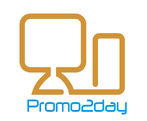03-29-2016 , 11:56 AM
"We plan to bring Office 365 Connectors to the Outlook inbox"
While Microsoft has arguably abandoned much of its Hub-influenced interactions it brought with the introduction of Windows Phone 7 and Windows 8, the company appears to be doubling down on the idea of centralized information when it comes to Office 365. As Microsoft continues to grow Office 365 into a platform rather than an enclave of productivity apps, the company is expanding the individual as well as the collective capabilities of the apps with Office 365 Connectors.
In November 2015, the Office team released Office 365 Connectors in limited preview to customers. With a few months of fine tuning, customer feedback and testing under their belts, the Office team is now ready to offer all Office 365 customers access to Connectors.
What exactly are Office 365 Connectors?
In layman’s terms, Connectors represent a set of app API’s that allow Office 365 users to bring in information from their favorite or necessary sources such as Twitter, GitHub, SalesForce, MailChimp, Trello or Bing. Office 365 Connectors is no single end point but a collection of source material that can be embedded in the Office 365 experience, allowing users to keep track of notifications, replies and alerts from outside sources without ever having to leave Office 365.
To some extent, Outlook.com offers a Cliff’s Notes version of this functionality, but Office 365 Connectors appears to be a greater push into getting more partners and more “Connectors” to customers.
Office 365 Connectors is currently available for First Release Office customers with a later roll-out planned for the general public. For more on the exact number of Connectors available, or how to get a hold of the new offering, head over to Microsoft’s Support Page for Connect apps to your groups.
Source
While Microsoft has arguably abandoned much of its Hub-influenced interactions it brought with the introduction of Windows Phone 7 and Windows 8, the company appears to be doubling down on the idea of centralized information when it comes to Office 365. As Microsoft continues to grow Office 365 into a platform rather than an enclave of productivity apps, the company is expanding the individual as well as the collective capabilities of the apps with Office 365 Connectors.
In November 2015, the Office team released Office 365 Connectors in limited preview to customers. With a few months of fine tuning, customer feedback and testing under their belts, the Office team is now ready to offer all Office 365 customers access to Connectors.
What exactly are Office 365 Connectors?
In layman’s terms, Connectors represent a set of app API’s that allow Office 365 users to bring in information from their favorite or necessary sources such as Twitter, GitHub, SalesForce, MailChimp, Trello or Bing. Office 365 Connectors is no single end point but a collection of source material that can be embedded in the Office 365 experience, allowing users to keep track of notifications, replies and alerts from outside sources without ever having to leave Office 365.
To some extent, Outlook.com offers a Cliff’s Notes version of this functionality, but Office 365 Connectors appears to be a greater push into getting more partners and more “Connectors” to customers.
Quote:Over 50 Office 365 Connectors are available today, spanning popular applications across productivity, news sources, HR systems, sales, project management, marketing automation, entertainment, eLearning, developer tools and many more. Some examples include MailChimp, Asana, GitHub, Stack Overflow, Aha, Zendesk, Salesforce, Twitter and UserVoice. We are also working with many other partners to enable additional connectors that will be made available soon.
In addition to the current Groups inbox integration, we plan to bring Office 365 Connectors to the Outlook inbox for individual users to leverage and over time to other experiences across Office 365.”
Office 365 Connectors is currently available for First Release Office customers with a later roll-out planned for the general public. For more on the exact number of Connectors available, or how to get a hold of the new offering, head over to Microsoft’s Support Page for Connect apps to your groups.
Source







